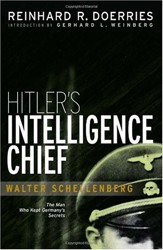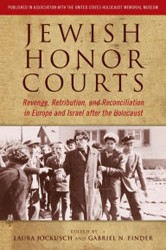Saul Friedländer, a professor of history at UCLA, is a child survivor of the Holocaust who has written several important books on Nazi Germany and the Shoah. This volume is a follow-up to the critically acclaimed Nazi Germany and the Jews: The Years of Persecution, 1933 – 1939. It will cement his reputation as one of the most influential and perceptive historians of the Shoah writing today.
The present volume continues an approach begun earlier that claims that the history of the Holocaust should move beyond the analysis of German policies and measures to include the reactions and decisions of the surrounding world as well as the attitudes and behavior of the victims. For Friedländer, the persecution and extermination of the Jews of Europe was not a secondary consequence of German policies, but rather was at the matrix of Nazi ideological and cultural understanding. Hitler’s brand of anti-Jewish hatred functioned as a “redemptive anti-Semitism,” as a way of redeeming the world by eliminating the Jews. For a regime dependent on constant mobilization, the Jews served as the constant generating myth. The mobilizing function of the idea of the Jew helps explain the behavior of the ordinary Germans toward the Jews they encountered, persecuted, and murdered, as well as the attitudes and reactions of bystanders. Friedländer demonstrates in great detail that there were virtually no social groups, religious communities, or scholarly or professional associations in Europe that declared solidarity with the Jews. He also shows how the level of anti-Semitism in Europe rose after Nazi occupation and after the extermination process was in full operation rather than what might have been expected.
The books other major contribution is that it provides the victims with a voice, not a voice that is a marginal part of the story, but one central to the narrative. Friedländer brings to life the words of the victims through their letters and diaries. He uses this resource probably more extensively and effectively than any other scholar, helping him write a history with a novelist’s sense of the human aspects of the tragedy. Keenly aware that the role of historical knowledge is to smooth away disbelief, to make history seem ordinary, Friedländer provides a remarkable study of the Shoah without eliminating or domesticating the enduring sense of shock or disbelief that must confront any reader.



